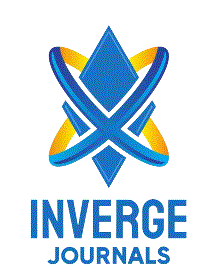The Effect of Doodling and Drawing on Memory Recall in Young Adults
DOI:
https://doi.org/10.63544/ijss.v4i2.128Keywords:
Doodling, Drawing, Memory Recall, Gender DifferenceAbstract
The research aimed to study the effect of doodling and drawing on memory recall using a Between-Subjects true experimental design. An audio dialogue between a couple, sampled from the dialogue used by Boggs (2017) in his study, was utilized to examine the effect of doodling and drawing on memory retention and recall. The study included 60 university students aged 17-24, mostly recruited from the same university. Participants were randomly allocated into three groups: doodling group, drawing group, and control group. The results of the statistical analysis suggest that doodling and drawing have no positive effect on memory recall. Instead, doodling and drawing led to poorer recall compared to the control group. Drawing conditions resulted in the worst recall on the memory task. Further analysis revealed that cognitive load may play a significant role in these findings, as drawing and doodling could divert attention from auditory processing. It was found that females performed better on memory recall utilizing doodling and drawing, based on the comparison between male and female performance. A comparison within groups showed that females achieved the highest scores in the doodling condition, whereas males had the highest recall scores in the control group. This gender difference suggests that females may process visual and auditory information differently or may be more adept at multitasking. To summarize, doodling and drawing did not enhance memory recall. However, in comparison to one another, doodling has a better effect on memory recall than drawing. Compared to males, females performed better and scored higher in all three domains: doodling, drawing, and control conditions. The experimental findings concluded that doodling and drawing do not affect memory recall in university students. Future research could explore different types of doodling (structured vs. unstructured) or incorporate visual aids to determine if specific conditions might yield different outcomes. Additionally, investigating individual differences in cognitive styles could provide deeper insights into why females outperformed males in this study.
References
Amico, G., & Schaefer, S. (2019). No Evidence for Performance Improvements in Episodic Memory Due to Fidgeting, Doodling or a "Neuro-Enhancing" Drink. Journal of Cognitive Enhancement. https://doi.org/10.1007/s41465-019-00124-9
Andrade, J. (2009). What does doodling do? Applied Cognitive Psychology, 24(1), 100–106. https://doi.org/10.1002/acp.1561
Bainbridge, W. A., Kwok, W. Y., & Baker, C. I. (2021). Disrupted object-scene semantics boost scene recall but diminish object recall in drawings from memory. Memory & Cognition. https://doi.org/10.3758/s13421-021-01180-3
Boggs, J. B., Cohen, J. L., & Marchand, G. C. (2017). The effects of doodling on recall ability. Psychological Thought, 10(1), 206–216. https://doi.org/10.5964/psyct.v10i1.217
Clark, J. M., & Paivio, A. (1991). Dual coding theory and education. Educational Psychology Review, 3(3), 149–210. https://doi.org/10.1007/bf01320076
Gawrylowicz, J., & Pereiraand, A. (2024). The impact of reading aloud on memory retention and recall in educational settings. Journal of Educational Psychology, 116(2), 234–248. https://doi.org/10.1037/edu0000456
Huang, T. (2023). What Does Doodling do in Chinese tasks: measuring the difference between Chinese and English with expected outcomes. Journal of Education, Humanities and Social Sciences, 8, 1253–1258. https://doi.org/10.54097/ehss.v8i.4459
McDaniel, M. A., Waddill, P. J., & Shakesby, P. (2005). The enactment effect in memory: A dual coding theory perspective. Quarterly Journal of Experimental Psychology, 58(5), 908–924. https://doi.org/10.1080/02724980443000240
Meade, M. (2019). The benefits and boundary conditions of drawing on episodic memory. University of Waterloo. https://uwspace.uwaterloo.ca/handle/10012/15082
Meade, M. E., Klein, M. D., & Fernandes, M. A. (2019). The benefit (and cost) of drawing as an encoding strategy. Quarterly Journal of Experimental Psychology, 73(2), 199–215. https://doi.org/10.1177/1747021819883476
Meade, M. E., Wammes, J. D., & Fernandes, M. A. (2019). Drawing as an encoding strategy: A meta-analytic review. Psychological Bulletin, 145(10), 899–933. https://doi.org/10.1037/bul0000205
Nayar, B., & Koul, S. (2020). The journey from recall to knowledge: A study of two factors—structured doodling and note-taking on a student's recall ability. International Journal of Educational Management, 34(1), 127–138. https://doi.org/10.1108/IJEM-01-2019-0002
Paivio, A. (1971). Imagery and verbal processes. Holt, Rinehart & Winston.
Paivio, A., & Csapo, K. (1973). Picture superiority in free recall: Imagery or dual coding? Cognitive Psychology, 5(2), 176–206. https://doi.org/10.1016/0010-0285(73)90032-7
Paivio, A., Rogers, T. B., & Smythe, P. C. (1968). Why are pictures easier to recall than words? Psychonomic Science, 11(4), 137–138. https://doi.org/10.3758/BF03331011
Picard, D., & Boulhais, M. (2011). Sex differences in expressive drawing. Personality and Individual Differences, 51(7), 850–855. https://doi.org/10.1016/j.paid.2011.07.017
Singh, T., & Kashyap, N. (2014). Does Doodling Effect Performance: Comparison Across Retrieval Strategies. Psychological Studies, 60(1), 7–11. https://doi.org/10.1007/s12646-014-0293-3
Sundararaman, D. (2020). Doodle Away: Exploring the Effects of Doodling on Recall Ability of High School Students. International Journal of Psychological Studies, 12(2), 31. https://doi.org/10.5539/ijps.v12n2p31
Tadayon, M., & Afhami, R. (2016). Doodling Effects on Junior High School Students' Learning. International Journal of Art & Design Education, 36(1), 118–125. https://doi.org/10.1111/jade.12081
Wammes, J. D., Meade, M. E., & Fernandes, M. A. (2016). The drawing effect: Evidence for reliable and robust memory benefits in free recall. Quarterly Journal of Experimental Psychology, 69(9), 1752–1776. https://doi.org/10.1080/17470218.2015.1094494
Weldon, M. S., & Roediger, H. L. (1987). Altering retrieval demands reverses the picture superiority effect. Memory & Cognition, 15(4), 269–280. https://doi.org/10.3758/bf03197030
Downloads
Published
How to Cite
Issue
Section
Categories
License
Copyright (c) 2025 Eimaan Ifroz, Ather Mujitaba , Suleman Ahmed, Asia Akbar

This work is licensed under a Creative Commons Attribution-NonCommercial-ShareAlike 4.0 International License.
The work is concurrently licensed under a Creative Commons Attribution-NonCommercial-ShareAlike 4.0 International License, which permits others to share the work with an acknowledgement of the authorship and the work's original publication in this journal, while the authors retain copyright and grant the journal the right of first publication.









